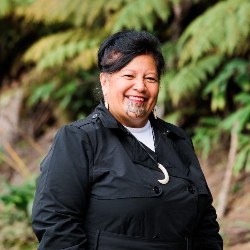Mackenzie meeting seeks new way forwards
Thursday, November 25, 2010 – Wellington
Forest & Bird media release for immediate
use
Mackenzie meeting seeks new way forwards
A
symposium starting tomorrow on the future of the Mackenzie
Country offers the chance to kickstart efforts to find less
confrontational ways of managing one of our iconic
landscapes.
The Future of the Mackenzie Country Symposium, which finishes on Saturday, is being organised by the Environmental Defence Society with Forest & Bird and the International Union for the Conservation of Nature/World Commission on Protected Areas.
Environment Minister Nick Smith, and representatives of local government, environmental groups, farmers, tourism and other industries will attend the symposium in Twizel.
Over the last 150 years, generations of farmers have grazed sheep and cattle on the tussocklands. This traditional dryland pastoral industry left enough room for native plants and animals to flourish.
The relatively recent spread of irrigation to allow further development of dairying and intensive agriculture is slowly transforming a fragile environment of clear lakes and golden tussocklands that is home to many unique animals and plants.
“Bringing everyone with a stake in the region together face-to-face will hopefully lead to finding a more cooperative way of managing competing interests in the Mackenzie,” said Forest & Bird Conservation Advocate Nicola Vallance.
“Forest & Bird is keen to get around the table with people who live and work in the Mackenzie, as well as those on a national level who promote tourism and the value of biodiversity and landscapes.”
Forest & Bird has been arguing for greater protection of the Mackenzie’s unique wildlife and the magnificent landscape prized by New Zealanders as one of the greatest treasures of our natural heritage.
The threats to the Mackenzie Basin include the failure of current planning controls to adequately protect the region’s natural character from rapid intensification of agriculture.
Wilding pines and rabbits are spreading, and southern areas in the basin are being transformed into a jumble of paddocks, pivot irrigators and private developments.
A total of 68 threatened plant species – 40 percent of the Canterbury region’s endangered flora – are found in the Mackenzie Basin, along with many rare insects.
Eight species of threatened birds are found in the basin, including the critically endangered kaki, or black stilt, which is being carefully managed after slumping to just 23 individuals in 1981. Another is the wrybill, which numbers only around 5000 nationwide, and is the only bird in the world with a bill curved sideways.
The spectacular landscape is a draw for around 900,000 visitors each year and the Tourism Industry Association (TIA) describes it as “one of the jewels in New Zealand’s crown”. The number of international visitors to the Mackenzie is forecast to rise 14.8 percent to 510,000 between 2008 and 2015.
ends


 Gordon Campbell: On bird flu, AUKUS entry fees and Cindy Lee
Gordon Campbell: On bird flu, AUKUS entry fees and Cindy Lee NZ Government: New Lab To Help Protect Key Pacific Tuna Fisheries
NZ Government: New Lab To Help Protect Key Pacific Tuna Fisheries Susan Botting - Local Democracy Reporter: Ruawai Leader Slams Kaipara Council In Battle Over $400k Property
Susan Botting - Local Democracy Reporter: Ruawai Leader Slams Kaipara Council In Battle Over $400k Property Te Pati Maori: Another ‘Stolen Generation’ Enabled By Court Ruling On Waitangi Tribunal Summons
Te Pati Maori: Another ‘Stolen Generation’ Enabled By Court Ruling On Waitangi Tribunal Summons Peace Action Wellington: Die In for Palestine Marks ANZAC day
Peace Action Wellington: Die In for Palestine Marks ANZAC day Labour Party: Penny Drops – But What About Seymour And Peters?
Labour Party: Penny Drops – But What About Seymour And Peters? Government: PM Announces Changes To Portfolios
Government: PM Announces Changes To Portfolios


